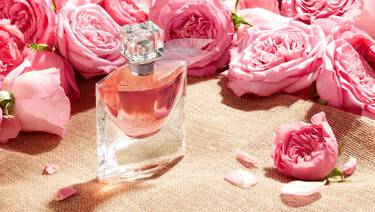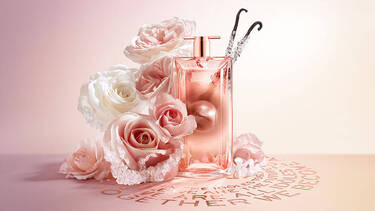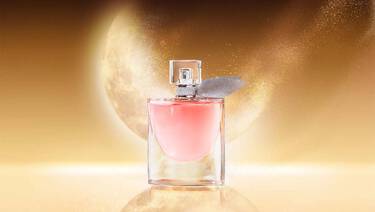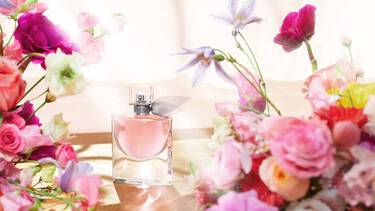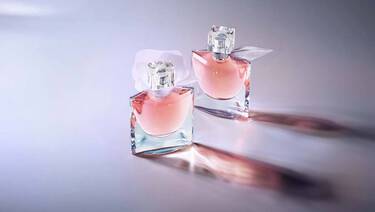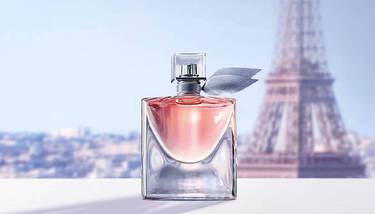Your Guide To Perfume Layering & How To Create Your Personal Perfume Combination

Perfume is more than just a fragrance; it’s an expression of your personality, mood, and style. While choosing the perfect scent can be a daunting task, perfume layering offers a creative way to customise your fragrance, making it truly unique to you. Whether you’re a perfume enthusiast or just beginning to explore the world of fragrances, this guide will introduce you to the art of perfume layering, its benefits, and how to create your personal perfume combination.
What Is Perfume Layering?
Perfume layering is the practice of combining two or more fragrances to create a customised scent. Instead of relying
on a single perfume, you can mix different scents to craft a fragrance that is uniquely yours. This technique allows
you to experiment with various notes and intensities, giving you the control over how your fragrance develops
throughout the day.
Perfume layering isn’t just about spraying multiple perfumes on top of each other. It involves understanding how
different notes interact, how they evolve on your skin, and how to blend them harmoniously to create a balanced and
pleasing scent. Whether you prefer something light and fresh or deep and mysterious, perfume layering can help you
achieve the perfect fragrance.
Benefits Of Layering Fragrances
-
Personalisation
The primary benefit of perfume layering is personalisation. By combining different scents, you can create a signature fragrance that no one else has. This personalised scent becomes a part of your identity, leaving a lasting impression on those around you.
-
Versatility
Perfume layering allows you to adapt your fragrance to different occasions, moods, and seasons. For instance, you can create a light, airy scent for daytime and a richer, more intense fragrance for the evening by layering different perfumes.
-
Enhanced Longevity
Layering fragrances can extend the longevity of your scent. By combining perfumes with varying intensities and staying power, you can ensure that your fragrance lasts longer without needing frequent reapplication.
-
Depth And Complexity
Single perfumes are often composed of multiple notes that develop over time. By layering fragrances, you can add depth and complexity to your scent, making it more intriguing and multifaceted.
-
Creativity
Perfume layering is a form of self-expression and creativity. It allows you to experiment with combinations, discovering new and unexpected scents that complement your personality and style.
How To Layer Perfumes?
Perfume layering may seem intimidating at first, but with a few simple guidelines, you can master the art and create your perfect fragrance.
-
Step 1: Start With A Base Layer
Begin with a base scent that is light and subtle. This could be a fragrance with softer notes like musk, vanilla, or sandalwood. The base layer serves as the foundation for your fragrance, anchoring the subsequent layers and ensuring they blend smoothly.
-
Step 2: Add A Middle Layer
Next, apply a fragrance with more prominent middle notes. These could include floral, spicy, or fruity scents. The middle layer adds character and depth to your fragrance, bridging the base and top layers harmoniously.
-
Step 3: Finish With A Top Layer
Finally, add a top layer with bright and fresh notes, such as citrus, green, or aquatic scents. The top layer provides the initial impact of your fragrance, making it the most noticeable when you first apply the perfume.
Perfume Layering Tips
-
Consider The Fragrance Concentration
When layering, consider the concentration of each fragrance. Perfumes with higher concentrations, like Eau de Parfum, are more intense and longer lasting, so apply them sparingly. Eau de Toilette and body mists can be used generously as they are lighter and less overpowering.
-
Apply In The Right Areas
Apply each layer to pulse points like your wrists, neck, and behind the ears. These areas emit heat, helping the fragrance to develop and project throughout the day. You can also layer fragrances on your clothing but be cautious as some perfumes may stain.
-
Experiment And Adjust
Perfume layering is all about experimentation. Don’t be afraid to mix and match different scents, and adjust the proportions based on your preferences. Test your combinations on a small area of your skin before applying them fully to ensure they blend well.
-
Use Unscented Products As A Base
If you’re worried about overpowering your perfume, start with unscented body lotions, oils, or creams as a base. These products will help the fragrance adhere to your skin without altering the scent.
Perfume Notes That Go Well Together
Certain perfume notes naturally complement each other, creating harmonious and pleasing combinations. Here are some popular pairings:
1. Citrus And Floral
Citrus notes like lemon, bergamot, and orange blend beautifully with floral notes such as rose, jasmine, and lily. The freshness of citrus brightens the softness of floral, resulting in a lively and refreshing scent.
- Our recommendation: Idôle Eau de Parfum & La Vie Est Belle Eau De Parfum
2. Vanilla And Spices
Vanilla’s warm, sweet aroma pairs perfectly with spicy notes like cinnamon, cardamom, and nutmeg. This combination creates a cosy, comforting fragrance, ideal for cooler weather.
- Our recommendation: Trésor Eau De Parfum & Miracle Eau De Parfum
3. Woody And Musky
Woody notes like sandalwood, cedar, and patchouli work well with musky notes. The earthiness of wood enhances the sensuality of musk, creating a deep and alluring scent.
- Our recommendation: Idôle Eau de Parfum & Miracle Eau De Parfum
4. Fruity And Floral
Fruity notes such as peach, apple, and berries blend seamlessly with floral notes, creating a playful and youthful fragrance. This combination is perfect for a light and cheerful scent.
- Our recommendation: Miracle Eau De Parfum & Trésor Midnight Rose Eau De Parfum
Notes That Shouldn’t Be Combined
While perfume layering offers endless possibilities, some combinations can clash and create unpleasant scents. Here are a few pairings to avoid:
1. Citrus And Gourmand
Citrus notes can clash with gourmand notes like chocolate, caramel, or coffee. The sharpness of citrus can overpower the sweetness of gourmand, resulting in an odd scent.
2. Floral And Metallic
Floral notes don’t always blend well with metallic or aldehydic notes. The delicate nature of floral can be overwhelmed by the harshness of metallic, leading to an unbalanced fragrance.
3. Heavy And Light Scents
Avoid layering heavy, intense scents like oud or leather with light, airy notes like green tea or lavender. The heavier scent can dominate, making the lighter fragrance almost undetectable.
4. Too Many Competing Notes
Layering too many strong fragrances with different dominant notes can create a confusing and overwhelming scent. Stick to a maximum of three perfumes with complementary notes to maintain balance.
Perfume layering is a creative and personal way to customise your fragrance, allowing you to craft a scent that is uniquely yours. By understanding the principles of perfume layering, experimenting with different perfume notes, and avoiding clashing combinations, you can create a signature fragrance that reflects your individuality. Whether layering for a special occasion or everyday wear, perfume layering offers endless possibilities to express yourself through scent. So, what are you waiting for? Explore Lancôme’s fragrance collection and mix and match to create a unique scent that represents you.


















